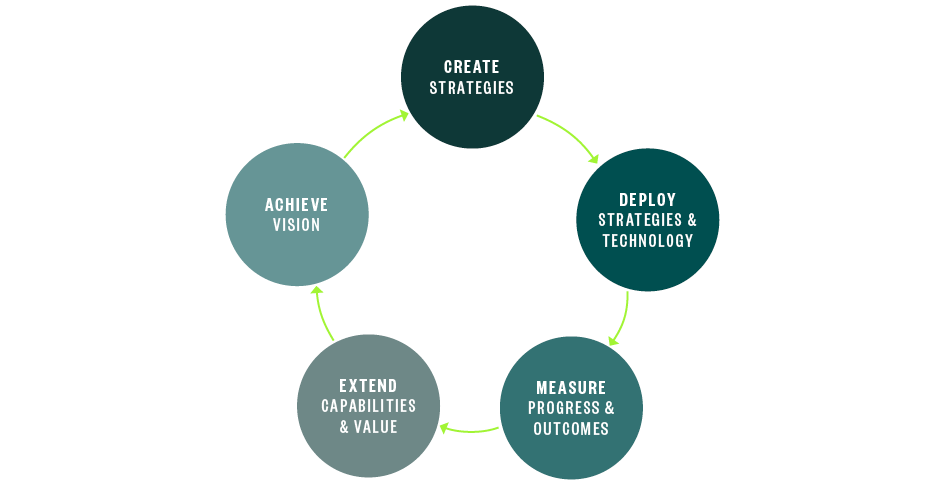
Various departments in your business may have individual technology needs, but a technology roadmap encompasses your entire business. It gives you visibility into your technology standing, helps prioritize focus areas, and paves a path to build strategic plans and tangible action plans that align with your overall business plan and strategy.
Planning and mapping out long-term organizational outcomes with the role your systems will play in those plans is a huge step towards achieving your goals. However, you need more than a strategy.
An execution plan can help define the necessary decisions and next steps that allow you to achieve incremental gains on the path towards meeting your business goals.
What Is a Technology Roadmap?
The purpose of a technology roadmap is to help you gain visibility into your current technology standing, prioritize key focus areas, and build future-focused plans aligned to your strategic business plan.
Rather than assess your needs for a defined timeframe, a roadmap can help you approach new technology with the understanding that you will continuously evolve and reevaluate your business goals and how to support them.
Going beyond simple technology implementation, you can integrate solutions that support your people, process, and technology to work together to move your organization forward and make sure your technology strategy and plan are aligned with the business.
Holistic Benefits of a Technology Roadmap

How a Technology Roadmap Can Help
Developing a comprehensive technology strategy—a technology roadmap—can help proactively address business objectives and challenges.
Business Objectives
- Aligned business and system goals to drive the business
- Data needs and usage in reporting to facilitate decision making in the business
- Change enablement to achieve user adoption so that users can perform their job effectively and efficiently
Business Challenges
- Growth or cost reduction support
- Disruption such as transactions, market changes
- Pivots in the marketplace
- Unforeseen events or new initiatives
Technology Roadmaps Focus on Four Areas
Technology roadmaps provide a comprehensive assessment of your organization in four key areas.

Strategy and Systems Assessment
Determine whether your current systems and IT structure supports your strategic plan for growth and any revised infrastructure and additional spending and resources.
Cybersecurity
Identify potential cyber-risks and assess the strength of your cybersecurity standing, determine if vendors are thoroughly audited and vetted to prevent breaches, assess IT headcount, and more.
Business Continuity
Identify risks and develop a strategy to maintain business operations during potential disruption or unexpected events.
Process Automation and Improvement
Review and evaluate your current business processes to assess the impact automation could have on your organization.
5 Steps to Implement a Technology Roadmap
Roadmap development establishes the priority and cadence for key efforts to attain the technology landscape needed to pursue your business goals through a five-phase process.
1. Project Initiation
- Understand the key needs of the business and current pain points
- Align team members around project goals, plan, and execution steps
2. Fact Finding
- Examine the current technology landscape
- Review existing strategic plans, processes, and structures
- Assess how the current state aligns with the strategic and operational requirements of the business
3. Analysis
Draft a report based on findings with recommendations to address strategic requirements and documented gaps
4. Analysis Review & Collaboration
- Conduct collaborative review of analysis recommendations
- Determine relevance and consider priority for recommendation-related efforts
5. Roadmap Report
Present analysis, recommendations, and roadmaps for related efforts with high-level time, effort, and budget estimates.
We’re Here to Help
For guidance on developing and implementing a technology roadmap, contact your Moss Adams professional.